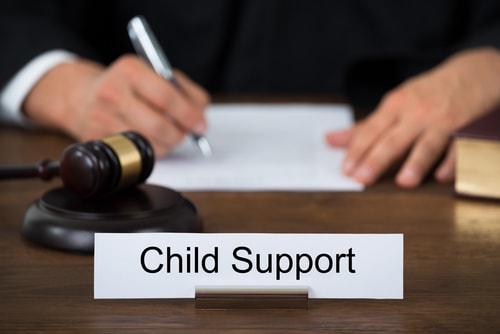116 N. York Street, 3rd Floor, Elmhurst, IL 60126
 312-605-4041
312-605-4041
The Updated Illinois Child Support Law and Shared Physical Care
 In July 2017, a revision to the Illinois Marriage and Dissolution of Marriage Act (IMDMA) went into effect, completely redefining the way child support is calculated when parents divorce. Gone is the simple method of the past, in which the amount of support was based only on the income of the paying parent and the number of children being supported. Illinois now uses an “income sharing” model which considers the combined income of both parents and divides support between parents based on what percentage each parent contributes to the combined income.
In July 2017, a revision to the Illinois Marriage and Dissolution of Marriage Act (IMDMA) went into effect, completely redefining the way child support is calculated when parents divorce. Gone is the simple method of the past, in which the amount of support was based only on the income of the paying parent and the number of children being supported. Illinois now uses an “income sharing” model which considers the combined income of both parents and divides support between parents based on what percentage each parent contributes to the combined income.
Child Support in Cases of Shared Physical Care
When determining child support under the new law, courts will use tables provided by the Illinois Department of Healthcare and Family Services (HFS) to determine the amount that parents would have spent to support their children had they not divorced, then this amount will be divided between the parents based on each parent's percentage share of their combined income. However, in cases of shared physical care, additional calculations are required to further divide the support obligation between the parents based on the amount of parenting time each parent has with their children.
Shared physical care occurs when children stay overnight with each parent spends at least 40% of the time or 146 days per year. In these cases, the amount of the parents' financial obligation will be multiplied by 1.5. Each parent's portion of this obligation will then be multiplied by the other parent's percentage of overnight stays with their children. The resulting amounts will be offset, and the parent who has the higher obligation will pay the other parent the difference between the two amounts.
Calculating Shared Physical Care Obligations
For an example of how to calculate child support in shared physical care situations, we will look at the case of Tom and Michelle, who have two children. Tom makes a gross income of $3,000 per month, and the children will stay with him 175 days each year. Michelle makes $2,000 per month, and the children will stay with her 190 days each year.
First, the basic support obligation is calculated using the HFS Gross to Net Income Conversion Table and Income Shares Schedule. At their combined net income of $4,131 per month, the obligation for two children is $1,294. With a net income of $2,384, Tom's percentage share of the combined income is 57.7%, so his portion of the obligation is $746.64. With a net income of $1,747, Michelle's percentage share is 42.3%, and her portion of the obligation is $547.36.
Each parent's portion of the obligation is multiplied by 1.5 to determine their shared physical sSupport obligation. Tom's portion is $1,119.96, and this amount is multiplied by Michelle's percentage of time with the children (190/365, or 52.1%), resulting in $483.50. Michelle's portion of the obligation is $821.04, and multiplying it by Tom's percentage of time with the children (175/365, or 47.9%) results in $393.28.
The final shared care child support obligation is determined by subtracting the smaller figure from the larger figure. Subtracting Michelle's figure from Tom's figure results in $90.22, which is the amount of child support that Tom will pay to Michelle each month.
Contact an Elmhurst Child Support Lawyer
If you need help determining how the new child support law will apply to your divorce, the family law attorneys at Weiss-Kunz & Oliver, LLC can answer your questions and advocate for your family's best interests throughout the divorce process. Contact a Skokie child support attorney today at 312-605-4041 to schedule a consultation.
Sources:
https://www.illinois.gov/hfs/ChildSupport/parents/Pages/IncomeShares.aspx
https://www.illinois.gov/hfs/SiteCollectionDocuments/IncomeSharesOverviewPublicVersionRC.pdf




















